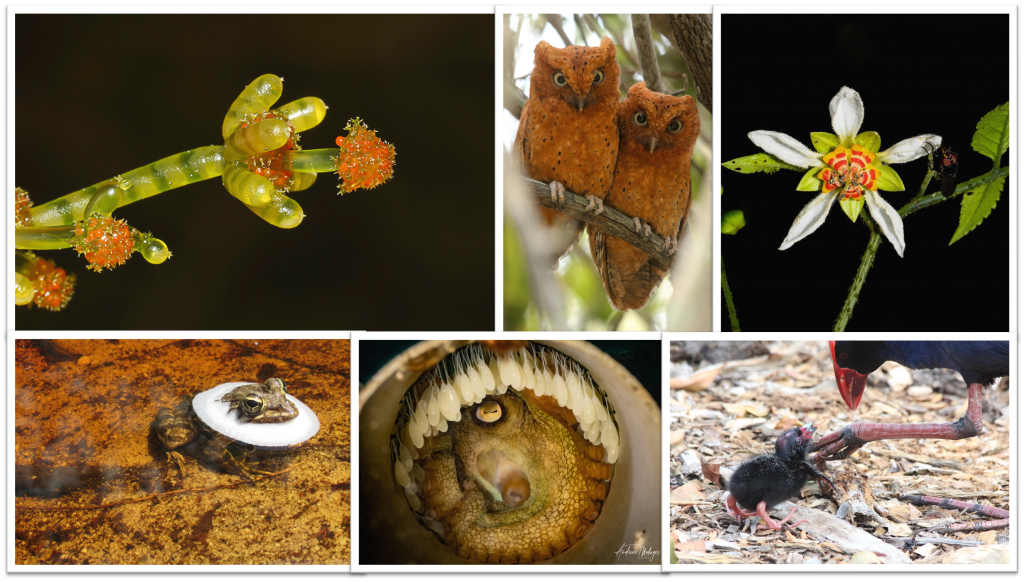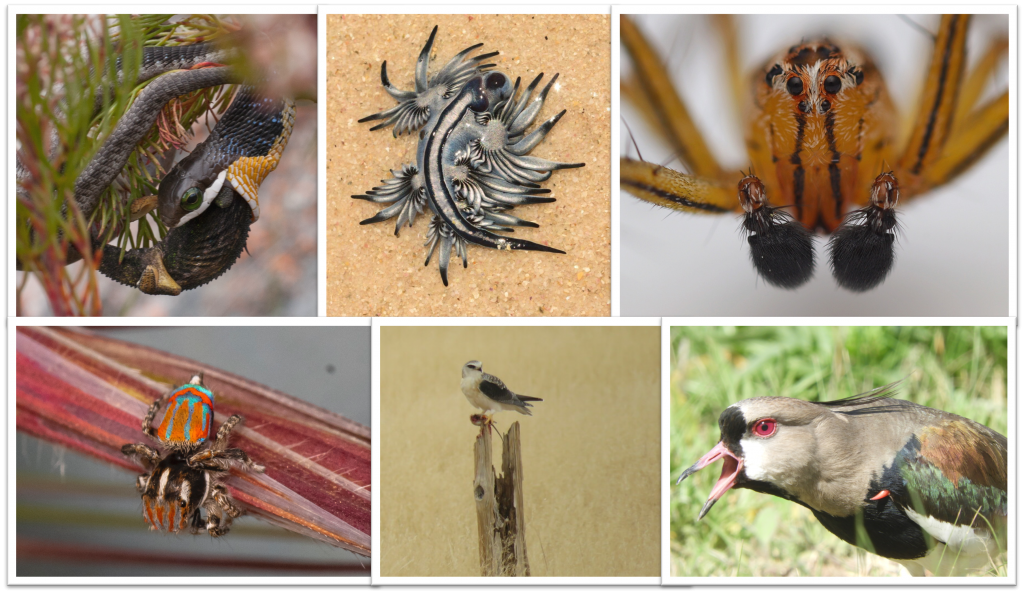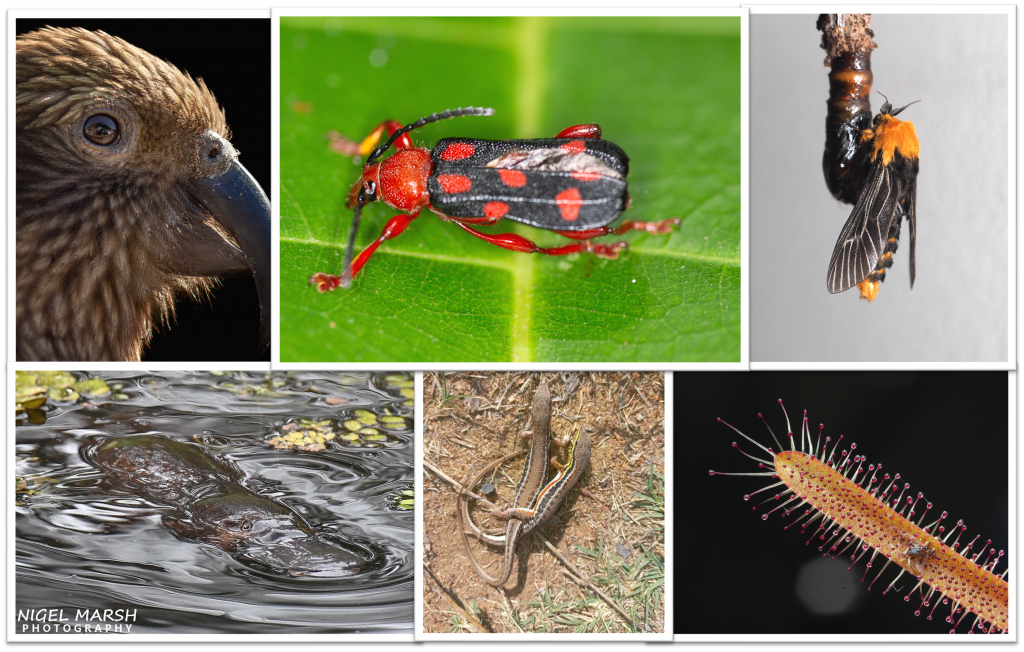Authors: Larissa Braz Sousa, Nicole Miller, Seamus Doherty, Peter Crowcroft, Michelle Neil, Stephen Fricker
Across the globe’s diverse landscapes, a quiet revolution is taking place. It’s a movement where everyday people, armed with curiosity and a passion for nature, are driving scientific discovery forward. This revolution is citizen science, and at its core are initiatives like the Great Southern Bioblitz (GSB), celebrating the awe-inspiring biodiversity of the southern hemisphere—from the majestic eucalyptus trees to the intricate beauty of tiny species.
The GSB is a citizen science initiative designed to observe as many species as possible during the Southern Hemisphere’s spring. Launched in 2020 amid the COVID-19 pandemic and devastating bushfires in Oceania and South America, the GSB was inspired by the City Nature Challenge. Beginning in Australia, it quickly spread to 19 countries and over 270 local areas across three continents, engaging people in a collective effort to boost biodiversity awareness and data collection.

In 2022, the GSB received a pivotal boost through the Seed Grants program from the Australian Citizen Science Association. This allowed us to further explore the extensive catalogue of biodiversity data and citizen science stories we had gathered over the first three years of the program. As recipients of this grant, we embarked on a journey alongside 21 co-authors from across the globe, delving deep into the impact and growth of the GSB.
Our collaborative effort resulted in a research paper targeting the open-access journal, Citizen Science: Theory and Practice. Through meticulous quantitative and qualitative analysis, we unearthed the profound evolution of the GSB since its inception in 2020. We are now in the final stages of analysis and writing and are looking forward to submitting it in June 2024. Here’s what we found:
Citizen scientists boosting data collection on iNaturalist
Quantitative revelations painted a vivid picture of success, showcasing a staggering 134% increase in observations since the inception of GSB. The growth trajectory was unmistakable, with a 90% surge in registered species in 2022 alone. Such remarkable strides not only underscored the project’s vitality but also its indispensable role in enriching biodiversity databases.

Motivations, benefits and nature connection
Yet, behind these numbers lie stories of personal transformation and connection to nature. Over 200 survey respondents expressed a resounding sentiment of joy and fulfilment derived from participating in the GSB. Their motivations ranged from a deep-seated desire to reconnect with nature to the sheer thrill of uncovering new flora and fauna.
One notable benefit of the GSB is that it encourages participants to use iNaturalist. Respondents who had never used the platform before the event reported continuing to use it multiple times after the GSB. While 41% of participants were frequent iNaturalist users, 10% were new to the platform. Post-event, 47% of new users continued using iNaturalist.

The participants’ key motivations included observing plants and animals (81.1%), connecting with nature (67%), and learning new things (69.3%). Free-text responses revealed themes of contributing to science, environmental education, personal or professional interest, and opportunistic or passive participation.

Echoing the motivations for participating, the key benefits mentioned were also observing plants and animals (81.1%), learning something new (69.3%), and connecting with nature (67%). Additionally, twenty-one free-text responses highlighted three main themes: contribution to science, environmental education, and self-improvement/fulfillment, which included exploring new areas and mental health benefits.

Challenges
However, amidst the triumphs, challenges lurked in the shadows. The learning curve commonly experienced by new iNaturalist users was a hurdle for some, while others grappled with the task of capturing identifiable photos. Nevertheless, these challenges served as catalysts for growth, igniting conversations aimed at fostering inclusivity and accessibility within citizen science initiatives.
Where to from here?
Our paper serves not only as a testament to the GSB’s triumphs but also as a rallying cry for the global citizen science community. By shedding light on both the successes and obstacles encountered, we strive to cultivate a culture of collaboration and innovation that transcends geographical boundaries.
Moreover, the impact of the Seed Grant extended far beyond financial assistance. It acted as a beacon that illuminated the GSB’s endeavours and amplified its reach on a global scale. The project gained momentum due to this heightened visibility and recognition, attracting new participants and partners alike.

The power of citizen science
As we reflect on the journey thus far, one thing becomes abundantly clear: the power of citizen science knows no bounds. It’s a force fueled by collective curiosity and unwavering dedication, driving us towards a future where scientific discovery is truly democratised. In the heart of the great southern hemisphere, amidst the whispers of eucalyptus trees and the rustle of native grasses, the GSB stands as a testament to what’s possible when common people unite in pursuit of a common goal. And as we continue to chart new territories and push the boundaries of scientific inquiry, one thing remains certain – the seeds of change planted today will blossom into a future teeming with possibility.

